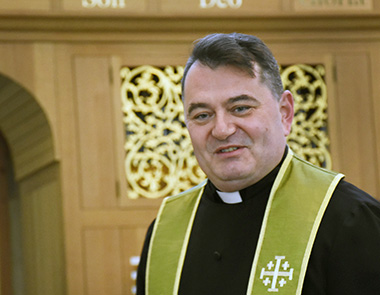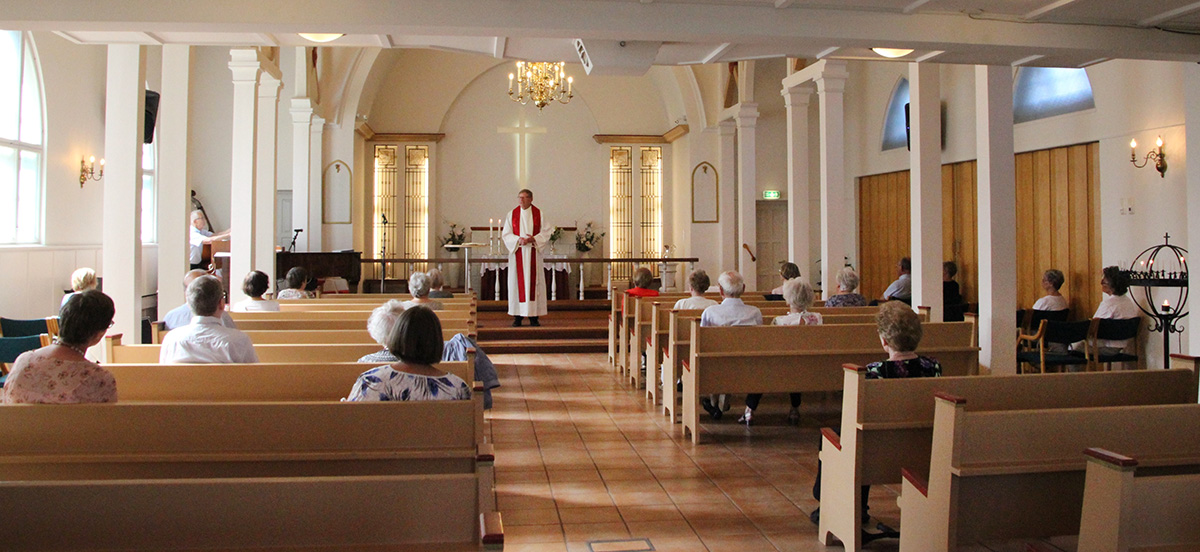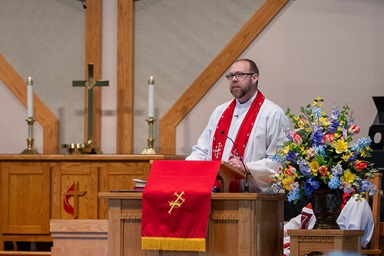Worrisome questions remain as United Methodist churches in Europe and Eurasia reopen for in-person worship, hoping the coronavirus is behind them.
Churches began gingerly moving back to in-person services in late May, after being shut down since March.
“Will people come back?” said the Rev. Thomas Risager, a district superintendent in the Denmark Conference. “When will we able to worship in a crowded church again? Will the new online worshippers stay with us and will they come to church for worship? Will the pastors and the churches really be able to do both online worship and worship in the church?”
Europe was especially hard hit by the virus, with the World Health Organization reporting more than 2.4 million cases as of June 14 and 188,001 deaths from COVID-19. New cases have slowed dramatically, with just 533 news cases reported in the past 24 hours.
Meanwhile, the power of the internet has become clear, and church leaders say it took COVID-19 shutting down in-person worship for them to dig deeper into what it had to offer.

The Rev. Daniel G. Topalski, district superintendent of the Bulgaria-Romania Provisional Conference
Photo courtesy of the Bulgaria-Romania Provisional Conference.
Photo courtesy of the Bulgaria-Romania Provisional Conference.
“We have sermons, Bible studies, morning prayers, worship services, lectures and everything needed for our people to stay fit in these unusual circumstances,” Topalski said. “Currently, we have 40 playlists and 745 videos on this channel.”
The church also increased traffic on its official website and Facebook page.
But no one says interacting with a computer screen can replace gathering in person.
“When the lockdown happened, it was all new and people were ready to accept the reality and take on this challenge,” said Robert Tserenkov, district superintendent of the United Methodist church in Estonia.
“But as time progressed, people got tired of being home and isolated from others. … Pastors really wanted the government to move faster and decide to open the churches sooner, rather than later. But our churches were obedient to the rules and regulations that the government provided.”
Although United Methodists in Germany remained in good spirits, they did “long to be together again in community,” said the Rev. Kate Harris Weishaupt, pastor of the United Methodist Churches in Halle and Dessau of the East German Conference.
“It is important for us, also in this time, to love our neighbor and that means keeping one another safe,” she said. “We did not want to put anyone at risk by opening the churches too soon. Everyone understood and respected this decision and did what they could to stay in contact with one another to ensure that morale stayed high.”
A newsletter with birthday announcements, short sermons, prayers, blessings and more was emailed each week to her congregants in Germany, Weishaupt said.
“This enables recipients to celebrate the same worship service in their home that is being celebrated at our church,” Weishaupt said. “These methods of staying connected and finding alternative ways to live out our faith have proven effective for my congregations, whose members are primarily senior citizens and migrants,” she said.
Norway churches made regular telephone calls to elderly and sick people as well as mailing a weekly church bulletin to all church members.

Elizabeth Moe Skreosen, chairwoman of The United Methodist Church Porsgrunn in Norway, is welcomed by fellow church member Kari Palmgren with an offer of hand sanitizer. Photo courtesy of The United Methodist Church Porsgrunn.
“The feedback has told us that all these activities have been appreciated and have given the members a feeling of connection even though they could not meet in church.”
Giving was predictably down for European and Eurasia churches because of the coronavirus.
In Norway, donations were down about 10%.
Subscribe to our
e-newsletter
Like what you're reading and want to see more? Sign up for our free daily and weekly digests of important news and events in the life of The United Methodist Church.
In Bulgaria, Topalski said that with some minor exceptions, churches didn’t get donations from members. “Online giving and sending money to the church bank account are not a popular way of giving here.”
Many churches in Europe and Eurasia have opened with restrictions for safety.
Norway churches reopened for Pentecost services on May 31, Bjerkseth said.
“We were allowed to have 50 persons in the church building seated with a distance of 1 meter from each other,” Bjerkseth said. “There were also a lot of other regulations we had to follow, especially regarding cleaning and hand hygiene.”
Church officials and congregants in Estonia are looking to the summer with hope, Tserenkov said.
“Most of our ministers experienced stress and tiredness from this situation,” he said. “I believe people are more hopeful, though some would need to take time off to get their strength back.”
Patterson is a UM News reporter in Nashville, Tennessee. Contact him at 615-742-5470 or newsdesk@umcom.org. To read more United Methodist news, subscribe to the free Daily or Weekly Digests.
Like what you're reading? Support the ministry of UM News! Your support ensures the latest denominational news, dynamic stories and informative articles will continue to connect our global community. Make a tax-deductible donation at ResourceUMC.org/GiveUMCom.




